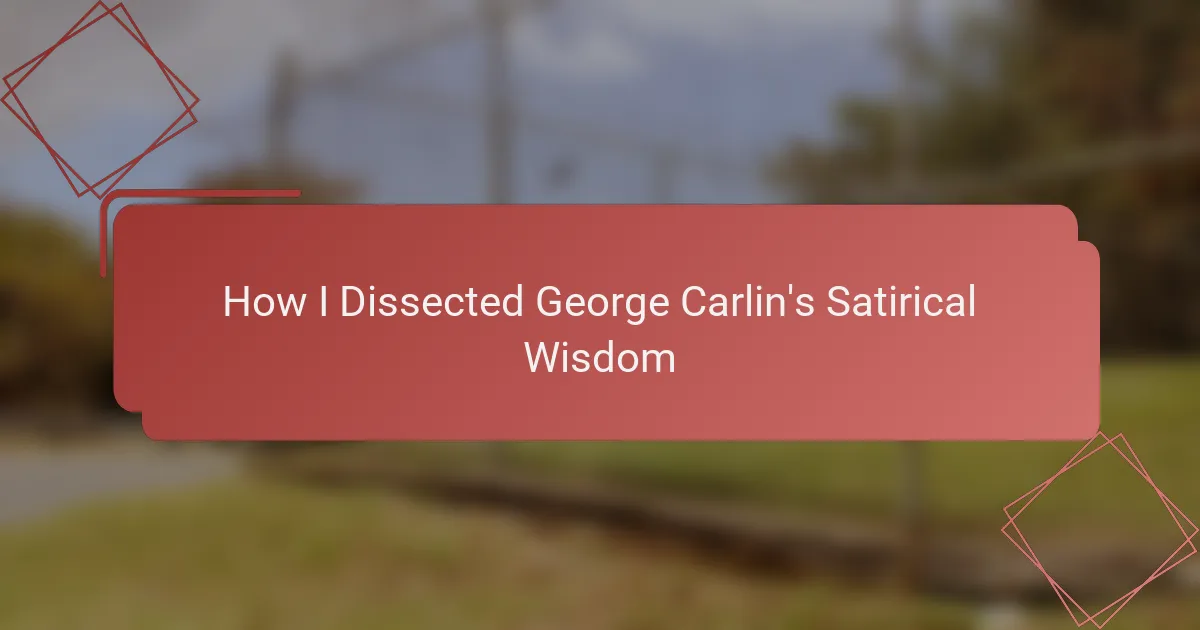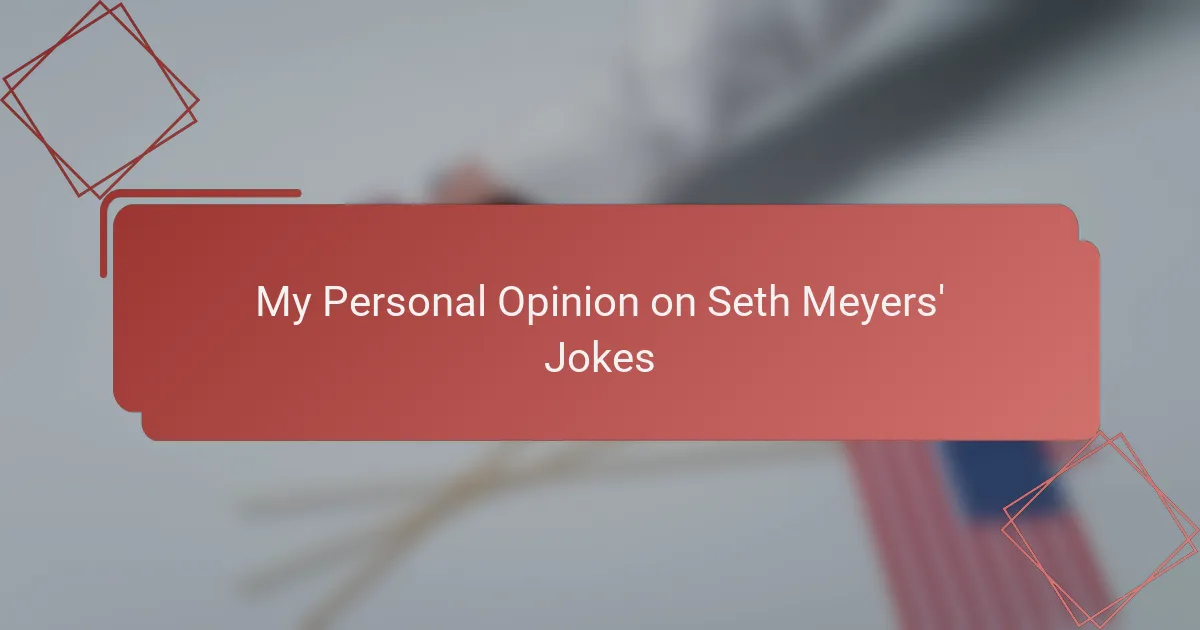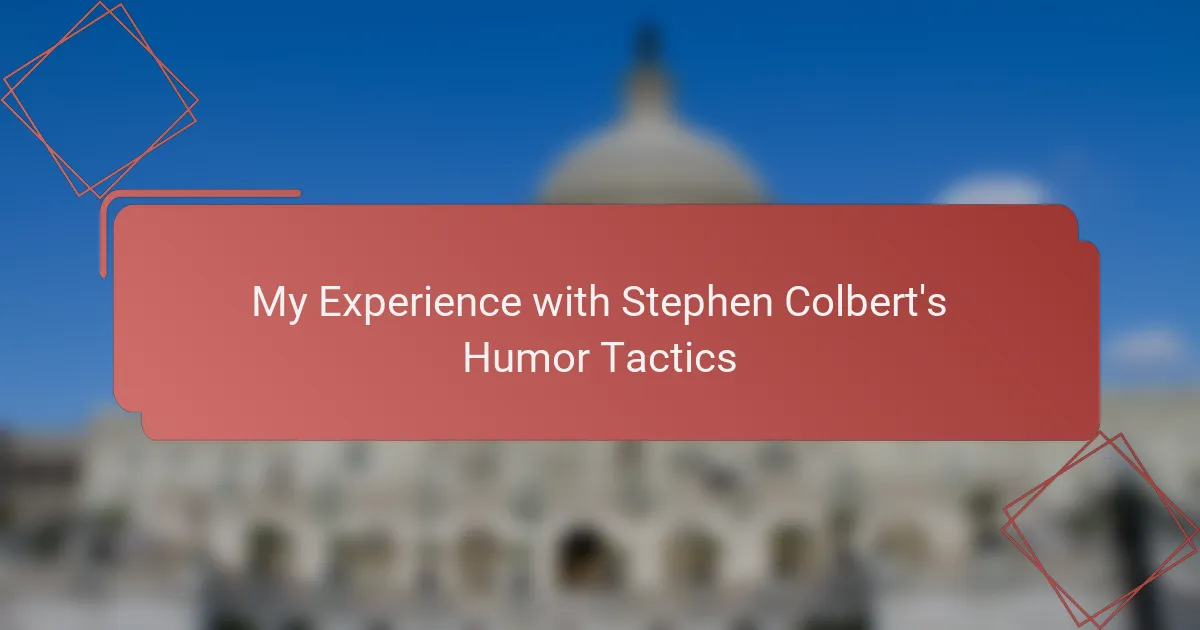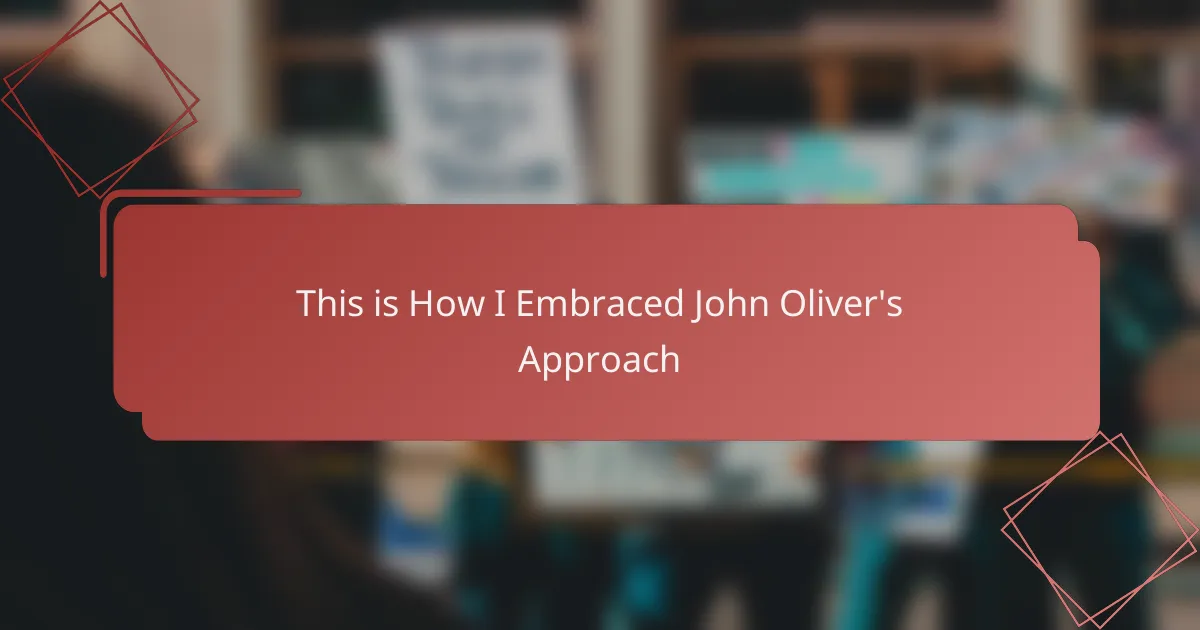Key takeaways
- Political satire uses humor to challenge authority and expose societal absurdities, encouraging deeper reflection on serious issues.
- George Carlin’s comedy skillfully combines sharp observations with relatable language, making complex criticisms accessible and thought-provoking.
- Key themes in Carlin’s work include the manipulation of language, political hypocrisy, and challenging social norms.
- Effective modern satire should embrace uncomfortable truths while balancing humor and incisive commentary, reflecting Carlin’s approach.

Understanding Political Satire Basics
Political satire is more than just humor aimed at politicians; it’s a powerful tool that uses wit to expose the absurdities and injustices within political systems. When I first started exploring this genre, I realized how satire invites us to question authority—it’s almost like a subtle rebellion wrapped in laughter. Have you ever caught yourself laughing at a joke, only to pause and think, “Wait, there’s truth hidden here”?
What fascinates me about political satire is its delicate balance between humor and critique. It’s not just about mocking; it’s about making you see the world differently. From my experience, the best satirical pieces highlight contradictions in a way that’s both entertaining and thought-provoking, pushing you to reflect on serious issues without feeling overwhelmed.
At its core, political satire relies on exaggeration and irony, tools that create a mirror reflecting society’s flaws in a distorted yet recognizable way. I often wonder how satire would evolve without these elements—would it still hold the same punch? For me, understanding these basics helped unlock a deeper appreciation for satirists like George Carlin, whose work masterfully blends sharp observation with comedic timing.
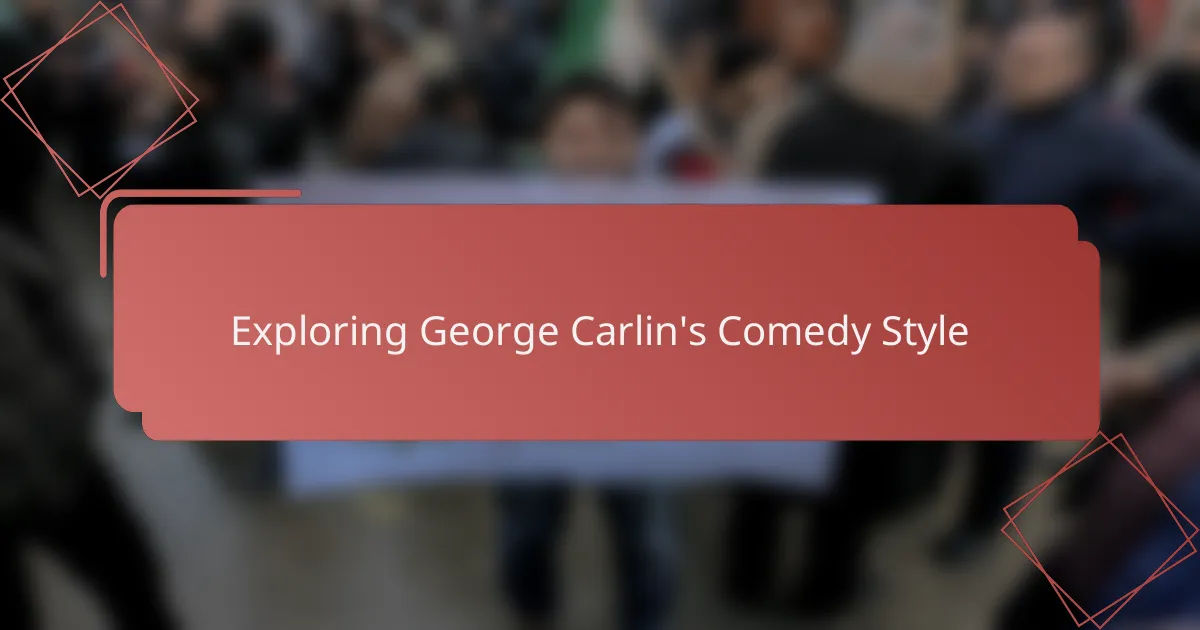
Exploring George Carlin’s Comedy Style
George Carlin’s comedy style struck me deeply because it wasn’t just about making people laugh—it was about making them think. His use of candid, sometimes raw language felt like he was pulling back the curtain on everyday hypocrisies, challenging me to confront uncomfortable truths I might otherwise ignore. Have you ever noticed how his rhythm and word choice draw you in, almost like a conversation with a friend who’s unafraid to say what everyone’s thinking?
What really stands out in Carlin’s delivery is his mastery of timing and emphasis. I remember watching one of his routines and feeling caught between amusement and a sudden jolt of awareness, as if his punchlines were landing sharper than mere jokes. This blend of sharp observation and a casual, almost conspiratorial tone creates an intimacy that makes the satire hit harder—like he’s inviting you to see the world through his eyes.
Carlin’s style thrives on unpredictability and linguistic playfulness; he twists language in ways that reveal absurdities hiding in plain sight. Thinking back, his fearless approach encouraged me to question not just political nonsense but also societal norms that often go unchallenged. Isn’t that the mark of true satire—when it sparks a shift in perspective while still making you laugh out loud?
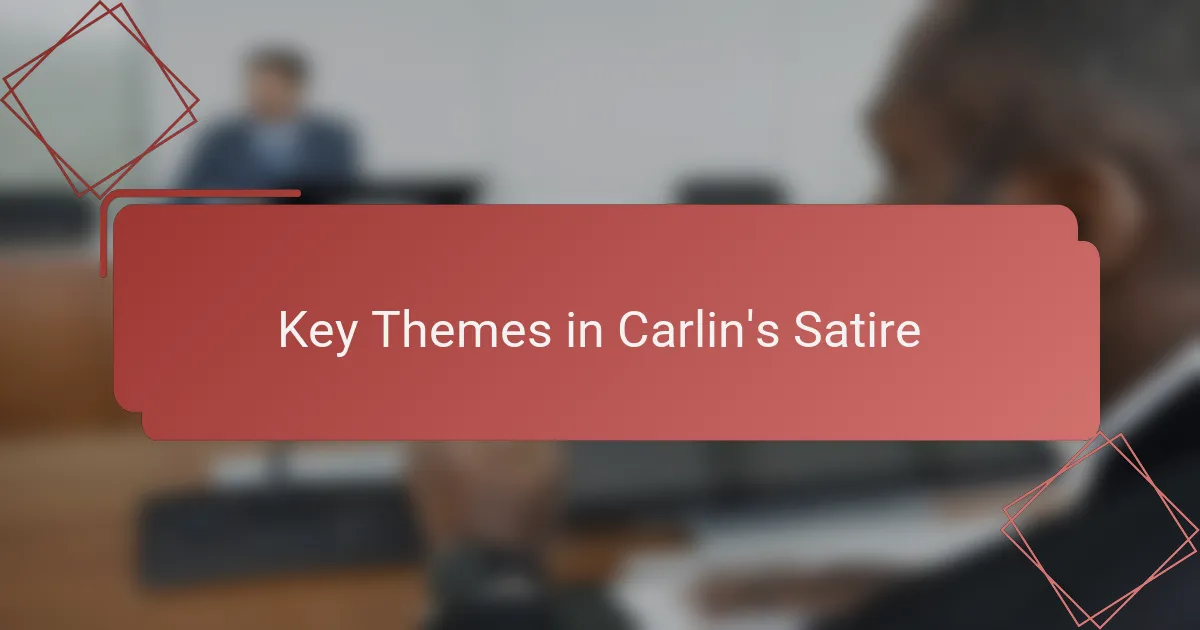
Key Themes in Carlin’s Satire
Key Themes in Carlin’s Satire
George Carlin’s satire incisively dissects societal norms with a sharp wit that never fails to make me rethink everyday realities. His commentary on language manipulation and political hypocrisy feels particularly relevant in today’s climate, where words are often twisted for convenience. I remember first hearing his take on “political correctness” and feeling both amused and unsettled—it’s satire that cuts deep because it’s rooted in uncomfortable truths.
| Theme | Carlin’s Approach |
|---|---|
| Language & Euphemism | Exposes how euphemisms mask truth and manipulate public perception |
| Political Hypocrisy | Mockery of politicians’ double standards and broken promises |
| Social Norms | Challenges conventional thinking and questions accepted moral standards |
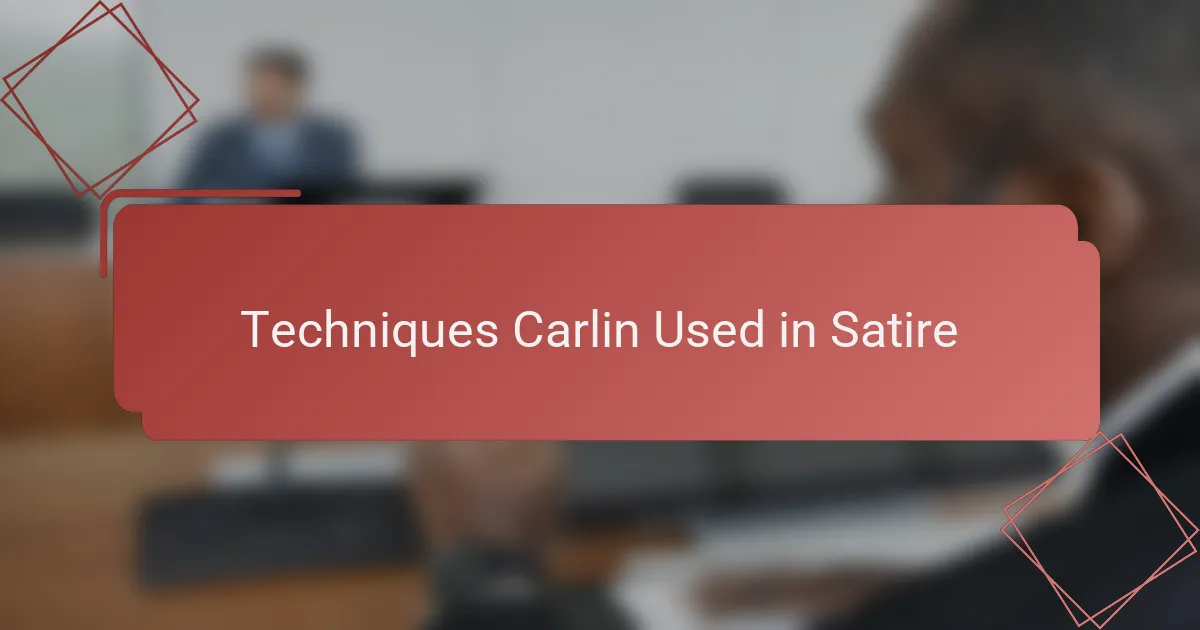
Techniques Carlin Used in Satire
George Carlin’s mastery of satire often hinged on his ability to blend sharp wit with raw honesty. I remember watching one of his routines where he dismantled social norms with such precision that it felt like he was not just making me laugh but also forcing me to confront uncomfortable truths. His techniques were not just about humor, but about opening eyes.
One technique that stood out to me was his use of carefully crafted language. Carlin played with words to twist common phrases and expose hypocrisy, which added layers to his satire that are both clever and biting.
- Wordplay and linguistic precision to reveal absurdities
- Use of repetition for emphasis and rhythmic impact
- Juxtaposition of everyday topics with profound societal critiques
- Strategic use of irony to highlight contradictions
- Engaging storytelling that personalizes political and social issues
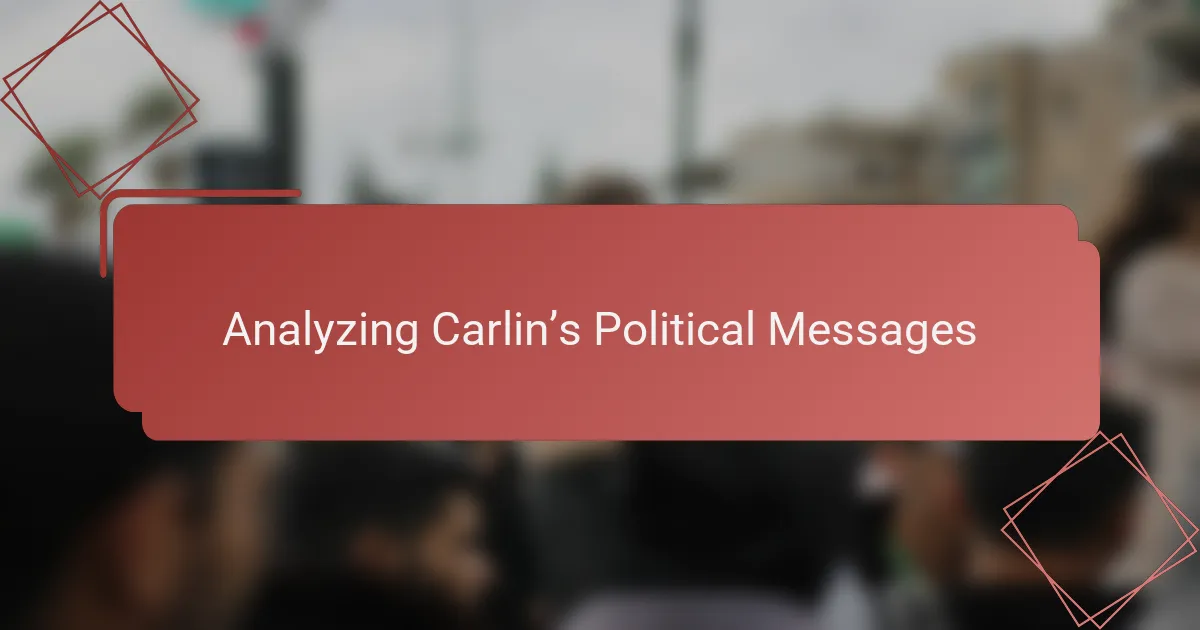
Analyzing Carlin’s Political Messages
When I first delved into George Carlin’s political satire, what struck me most was his fearless dismantling of power structures. His messages didn’t just criticize politicians—they exposed the systemic flaws that often go unnoticed. Listening to him, I felt a mix of amusement and discomfort, realizing how relevant his critiques remain even today.
Carlin’s work cleverly uses humor to challenge complacency, making serious political commentary accessible and thought-provoking. Here’s what I found most revealing in his political messages:
- Highlights hypocrisy in government and media with sharp wit
- Uses everyday language to connect with a broad audience
- Exposes how political rhetoric often disguises real intentions
- Encourages skepticism of authority rather than blind trust
- Blends frustration with dark humor to provoke reflection and debate
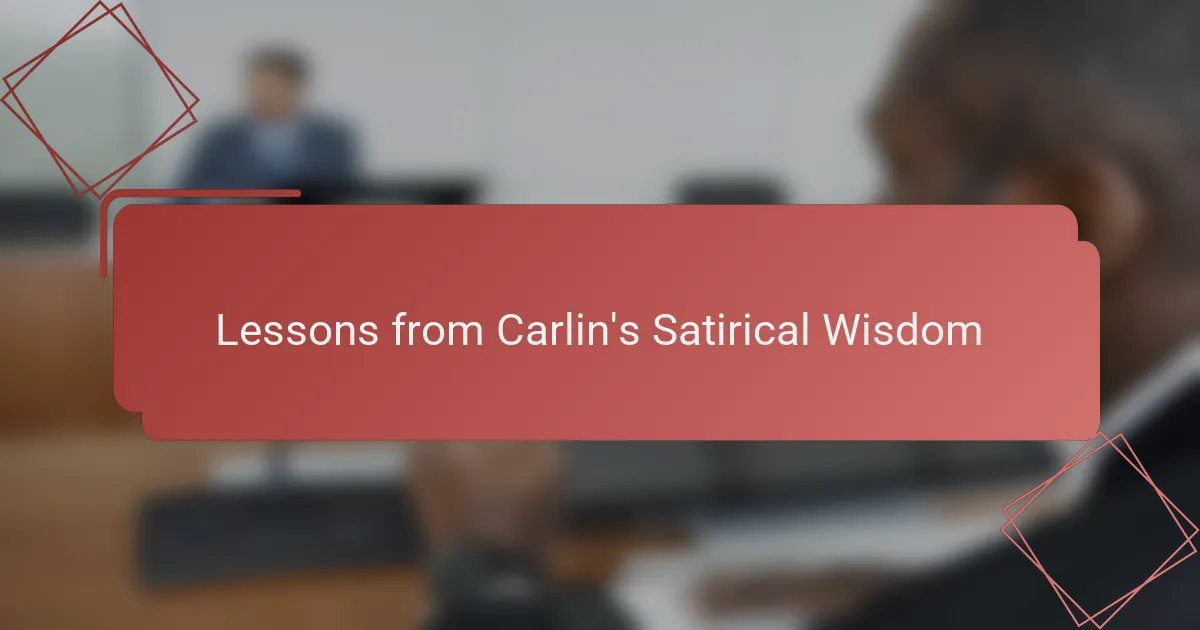
Lessons from Carlin’s Satirical Wisdom
Carlin’s satirical wisdom often strips away societal illusions, revealing uncomfortable truths with a sharp wit that can be both jarring and enlightening. When I first encountered his work, I was struck by how his humor peeled back layers of political rhetoric, exposing hypocrisy in a way that challenged me to think deeper about the messages I accepted at face value.
Here are the key lessons I’ve taken from Carlin’s satire:
- Question authority relentlessly, even when it’s uncomfortable.
- Use humor as a tool to confront serious issues without losing perspective.
- Recognize the power of language in shaping political narratives.
- Understand that satire can reveal societal contradictions often ignored.
- Embrace skepticism as a path to greater political awareness.
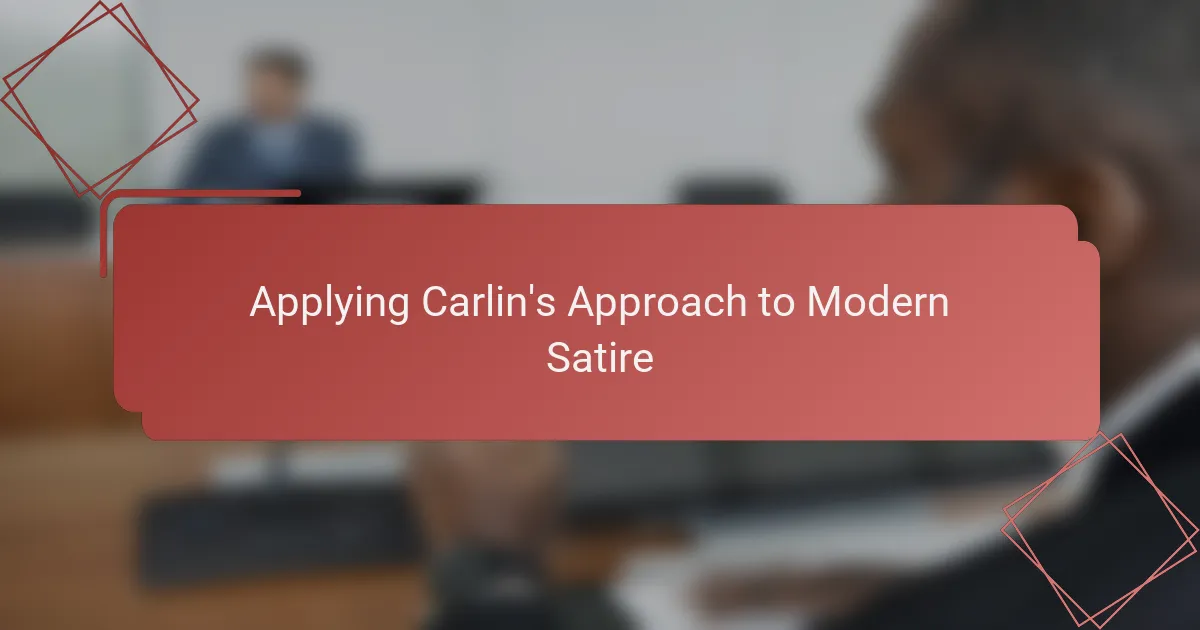
Applying Carlin’s Approach to Modern Satire
Applying Carlin’s approach to modern satire means embracing that fearless curiosity he championed—never shying away from uncomfortable truths, no matter how raw or unsettling they are. I often ask myself, how can today’s satirists capture that same biting honesty without losing the subtle humor that makes the critique digestible? From what I’ve seen, the key lies in balancing sharp observations with relatable language, just like Carlin did.
In my experience, the immediacy of today’s social and political media landscape calls for satire that’s quick, incisive, and fearless. Carlin’s technique of twisting everyday language to expose hypocrisy feels especially relevant now when so much messaging is crafted for spin. Applying his approach means paying close attention to the words people use—and don’t use—and turning those omissions into powerful satirical points.
What really resonates with me about using Carlin’s style today is the invitation to dig beneath surface narratives and challenge accepted norms, even when it’s uncomfortable. I remember catching a modern satirist who echoed this by flipping commonly accepted political phrases on their head, creating that jolting moment of realization I always associate with Carlin’s best work. Isn’t that what effective satire should do—make us laugh, then pause and rethink?
